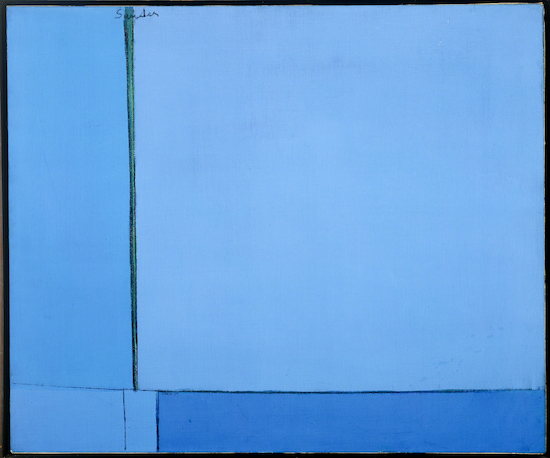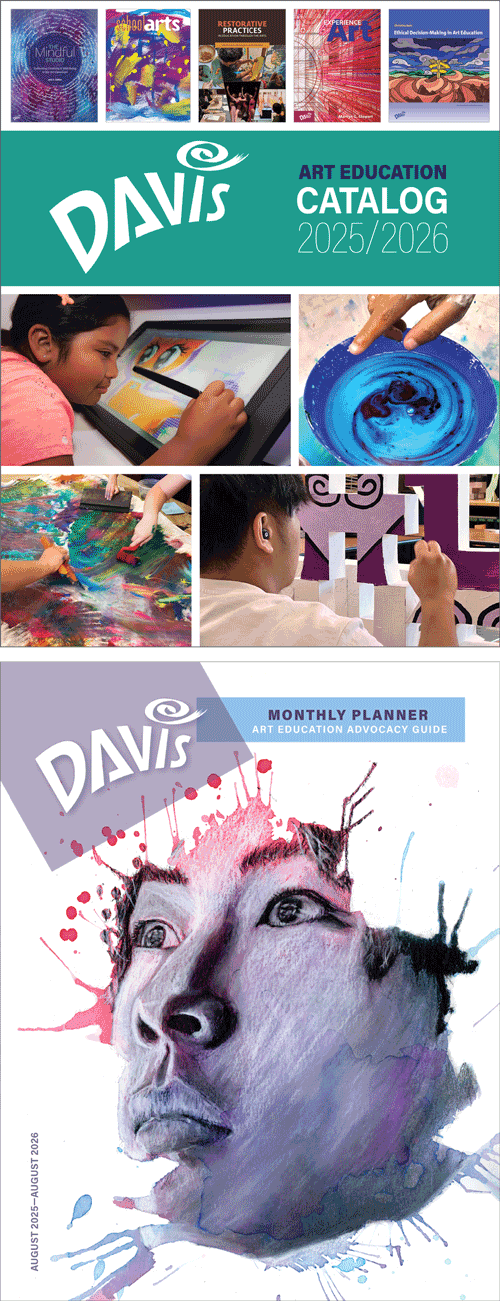Artist Birthday: Ludwig Sander
Ludwig Sander was a member of the New York School that established the United States as a center for modernist experiment in art. He was an early practitioner of Color Field painting which he stuck with through most of his career.
Artist Birthday for 18 July: Ludwig Sander (1906–1975, United States)
Ludwig Sander was a Color Field artist who was a participant in the vital New York School of the 1940s through 1960s.
 |
| Ludwig Sander, Composition – Blue, 1960. Oil and crayon on canvas, 51.1 x 61.3 cm. Buffalo AKG Art Museum, Buffalo, New York. © 2025 Artist or Estate of Artist. (AK-984) |
By the late 1950’s, Sander had settled into his style, creating works composed of geometric abstractions, with planes of flat color traversed by horizontal and vertical lines. Sander constructed the individual planes by building up opaque layers of paint within each section of the canvas. The resulting effect is calming and contemplative with a muted lyricism. These geometric planes are rarely symmetrically arranged, and often hint at shifting, where muted shades of gray or brown imply a depth that is actually not there.
Many American artists experimented with European-inspired abstract styles from before World War I (1914–1918) up until the time of the Great Depression (1929–1940). The postwar period and subsequent Depression fostered isolationist and nationalistic attitudes in American art patrons. Modernist experiment in art was rejected by the public in favor of realistic scenes of everyday American life. On the entry of America into World War II (1939–1945) in 1942, American artists found themselves in a crisis. It was impossible for American artists interested in modernism to follow the traditional modes of expression then current among the Social Realists and Regionalists who dominated the art scene. Eventually, it was the war that caused the ferment that would lead to the creation of the first original American modernist movement.
Many pioneer European modernist artists, such as Hans Hofmann (1880–1966) fled to New York when the war in Europe broke out. This exposed American artists hungry for change to a wide variety of abstraction and surrealism. American artists, disillusioned by what they perceived as the failure of traditional values and systems in the war, sought new ways of expression. They rejected any realistic or nationalistic tendencies, as well as the sterile formalism of such geometric abstractionists as Piet Mondrian (1872–1944). They were drawn to forms of abstraction that revealed individual expression.
By the mid-1940s, the leading artists of the New York school were exhibiting in galleries there. The Museum of Modern Art began acquiring their works, and in 1958 held a show called "The New American Painting." This show traveled to eight European countries, thus the New York School established an international reputation as a premier center of modernism. The major movements that came out of this period were Abstract Expressionism and Color Field.
Ludwig Sander was born in Staten Island, New York, the son of a musician. He studied art in Paris and Munich, and then in New York under pioneer abstractionist Hans Hofmann (1880–1966). Hofmann encouraged him to pursue abstraction. In the late 1940s he began incorporating Color Field ideas into his works. In 1949 he was a co-founder of The Club, an artists' association and discussion group that featured many of the nascent Abstract Expressionists, including Willem de Kooning (1904–1997), Franz Kline (1910–1962), Conrad Marca-Relli (1913–2000), and Jack Tworkov (1900–1982). This group ultimately became known as the New York School. In 1951 Sander participated in the famous Ninth Street Show at Leo Castelli Gallery, which introduced the New York School artists to the public. It also, for several decades, established New York as the center for cutting edge experiment in abstraction in the Western art world.

Comments